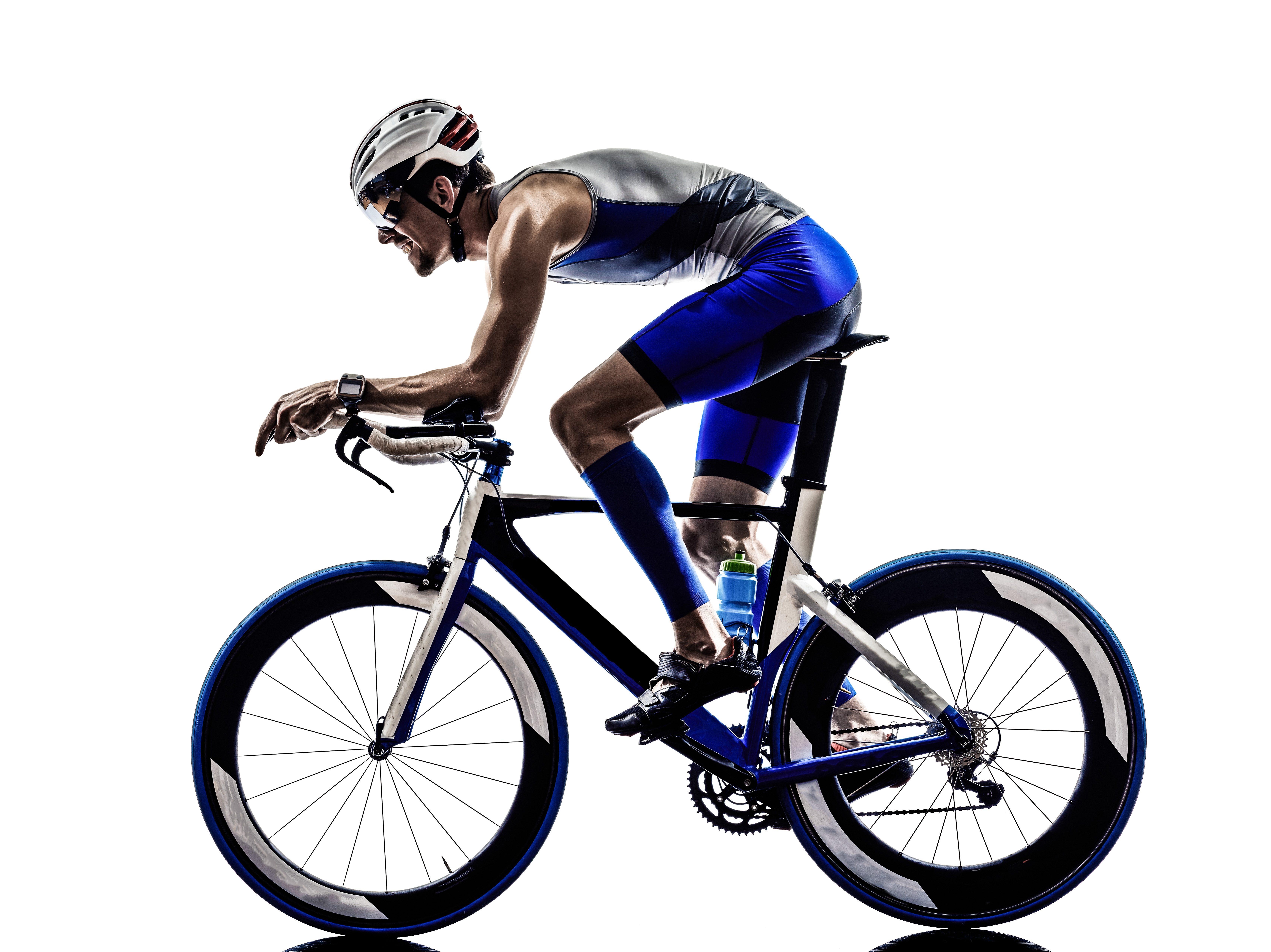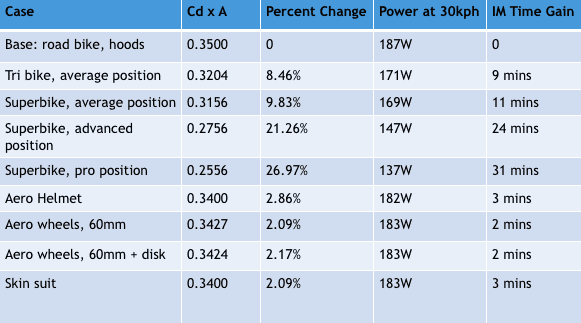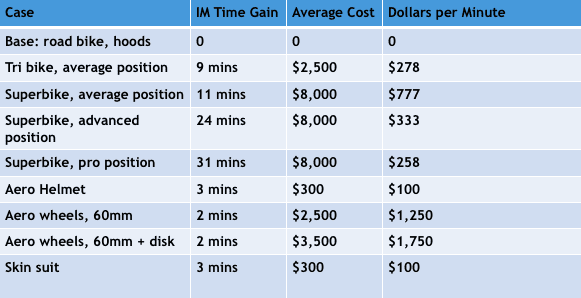Aero is everything: The science of speed
How triathletes can optimize their aerodynamics to crush the bike leg of their race.

Triathletes love their aerodynamics, but did you know you don’t need all the latest high-end equipment to get some major aero gains on race day? As a mechanical engineer-turned-tri coach, I’m interested in how my athletes can get the most speed and power on the bike. Therefore, I’ve crunched the numbers to figure out how triathletes can optimize their aerodynamics to crush the bike leg of their race.
RELATED: The best gifts for runners
Why?
Because overcoming aerodynamic drag accounts for approximately 80% of the power that a typical triathlete generates during a typical bike leg. Aero is key.
The math
Aerodynamic math is complicated, but we need to understand the components of the calculation in order to talk about how to minimize them however, so here’s a brief overview.
F_d=C_d×A×V^2
Where
- Fd is the drag force – this is the bit we want reduced
- Cd is the coefficient of aerodynamic drag
- A is the area facing the airflow
- V is the velocity of our rider relative to the air around her
Our goal is to minimize drag force (Fd), we can work on reducing aerodynamic drag (Cd) and area facing airflow (A).
Reducing drag
Cd is a dimensionless coefficient representing the ‘slipperiness’ of an object moving through a fluid. For triathletes, this is us on a bike and the fluid is of course air. Cylindrical-shaped torsos, limbs, and traditional bike frame tubing are not aerodynamic. In comparison, a tear-drop shape is aerodynamic. If we can shape ourselves into a more aerodynamic shape, we can reduce drag.
There are two ways to do this while riding a bike.
Position. A good bike fit will put the rider in a streamlined position, promoting a smoother, less turbulent airflow over the body. A quick note here — getting to that ideal aero position is considerably easier on a triathlon or TT bike than a road bike (even one with clip-on aero bars).
Equipment. Aerodynamically-optimized shapes used in bike frames, wheels, and helmets are all shaped more or less like tear-drops (or airfoils). That’s not just sexy industrial design. These optimized shapes helps claw back some more watts from the drag monster. Form-fitting, non-flapping clothing helps too.
Reducing area facing the airflow
Reducing area is a little more straightforward than reducing the drag coefficient. Put simply, if you ‘see’ less of yourself and your bike when looking head-on, you’re reducing area. As with Cd, there are wins to be had here from both rider position and equipment.
Position. A lower and narrower front-end fit will result in a smaller area. This should be done with some caution, as adjusting position too much can make for ergonomic trade-offs. Take care to ensure that position changes do not improve aerodynamics at the cost of power generation and comfort. This is a truly fine balance.
Equipment. Again, a triathlon-specific bike will lend itself to a more comfortable aero position for the rider. Beyond this, any area reduction is from the narrowing of leading edges of the bike frame. Look at a modern superbike from head-on and you’ll see how skinny they’ve become.
Power reduction & full distance time gains
Let’s take a look now at just how many watts – or minutes in a full distance bike leg – you can save by adopting a new position or new piece of kit.
The cost of free
Cost too is worth considering for most triathletes.
What can triathletes take away from this?
- Position is key. A good aerodynamic rider position makes – by far – the greatest difference to the final aerodynamics picture. Now, as previously stated, a triathlon bike is the best bet for a fit that is both fast AND comfortable.
- Wheels make less of a difference than most people think.
- The above numbers are just best case. They are suitable for comparison, but may not be representative of individual cases.
- The effect on end aerodynamics from deep wheels and deep frame profiles will be more substantial in real-world conditions.
- The only way to know your numbers is to test, of course. There are three options for this:
- Wind tunnel
- Velodrome with power meter and monitoring
- Repeatable, flat, outdoor loop with power meter and monitoring
Michael is an NCCP trained triathlon coach, certified personal trainer, and kettlebell instructor. His degree in mechanical engineering supports his evidence-based approach to coaching.
Michael is also the owner and head coach of the X3 Training Lab in Toronto.


